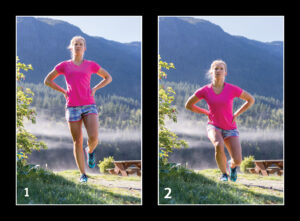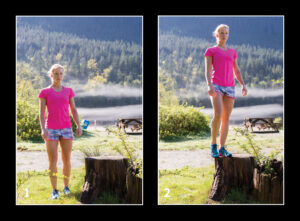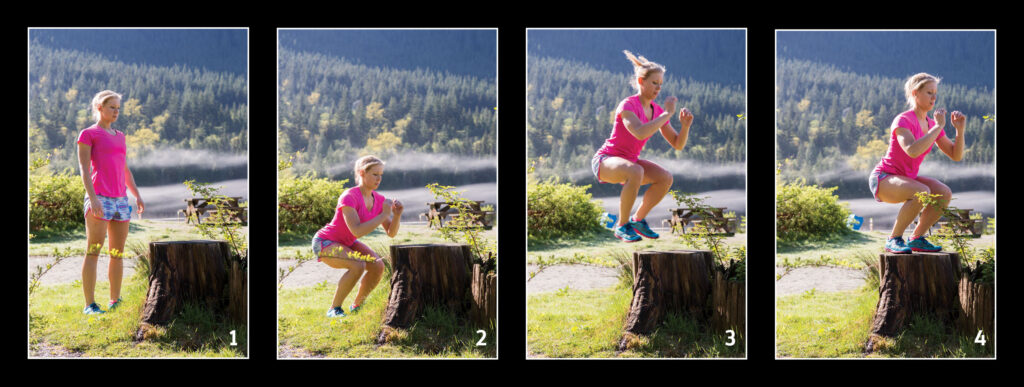
Breathe some life into your running routine. Hit the trails for a change of pace and trade the honking horns and exhaust fumes of city trails for singing birds, panoramic vistas, and fresh air.
You’re tired of traffic lights messing with your rhythm, and you’re sick of breathing in exhaust fumes. The unaware drivers are not helping either. Insert trail running, where honking horns are replaced with singing birds, skyscrapers with panoramic vistas, and pavement with more forgiving ground.
Whether you’re a new or seasoned runner, trail running offers the change of pace and scenery that you need to breathe some life into your running routine. But before hitting the trail, there are a few considerations and tips to keep in mind.
Have a plan
Preparing for a trail run requires slightly more effort than heading out for a run around the block. Plan your running route by consulting trail and topographic maps, guidebooks, or websites, cross-referencing your sources when possible.
Duration over distance
Start by running for a set duration, instead of distance. Once you know your pace, remember that a certain distance on a trail will take longer than the same distance on the road, so give yourself plenty of extra time. Uneven terrain, technical sections, hills, and stream crossings all contribute to a slower pace on the trails. Not to mention beautiful views and wildlife!
Just in case
Don’t forget to let someone know where you’re going and when you plan to return. And do your research with respect to any wildlife you may encounter on your run. Would you know what to do if you came across a brown bear, for example? It’s also a good idea to periodically look behind you, for when you’re returning. The trail can look different when travelling in the opposite direction.
Rain, rain, go away
When choosing a day to hit the trails, consider the weather of the previous week. Opt for a road run if there’s been heavy rain over consecutive days. Running on a muddy trail is detrimental to the structure of the trail and not just your shoes.
Pack smart
Make sure you have these essentials.
| Item | Details |
| trail map | search online or visit your local park authority |
| watch | to keep track of time |
| cellphone & ID | for emergencies |
| water | options include hand-held, waist-belt, vest, or backpack with hydration bladder |
| first-aid kit | check your local outdoors store for light and compact kits |
| snacks | energy bars or gels to fuel your run or for emergencies (match quantity to the duration of your run) |
| headlamp | for unplanned delays when running in the late afternoon |
| extra layer | moisture-wicking, breathable material |
| hat and sunglasses | sun protection for less glare and to protect your eyes from branches |
Road or trail shoes?
It’s perfectly fine to take your road shoes out on the trail when you’re first starting out, especially on less rugged trails. Once you’re running over roots and rocks regularly, investing in a pair of trail runners is worthwhile, as they provide the necessary traction, stability, and protection for attacking the trails. Comfort is key and can be achieved by a choosing a shoe that’s right for the terrain and right for your foot.
Trail runners look and feel different than their road companions. Typically, they will have a thicker sole with raised parts called lugs, key for providing traction. Higher collars will make your heel feel snug and aid in side to side stability.
Try on shoes with varying levels of cushioning and choose the ones that strike a balance between how much you want to feel and how much softness you need. A more cushioned shoe may result in less beat-up feet, but if you’re not used to being that high off the ground, you may feel unstable. Try not to stray too far from what you’re used to. The same applies for the heel-toe offset (drop) of a shoe. Get professionally fitted at a running or mountain equipment store.
Running technique
Scan
- A good trail runner scans the upcoming 3 to 5 m (10 to 15 ft) and plans a line of travel.
Stay agile
- Short strides make it easier to sidestep or jump over obstacles.
Tackling uphill
- Use short strides paired with a strong arm swing.
- Power hiking uphill is often the fastest and most efficient way to reach the top.
Controlling downhill
- Run like you would down a flight of stairs, contacting the ground only for short periods.
- Land on your midfoot.
- Keep your elbows wide.
Rules of the trail
- Be courteous to all other trail users.
- Let others know you’re approaching without startling them.
- Yield to downhill runners.
- Limit your environmental impact by keeping to marked trails.
- Run through puddles and other obstacles to avoid eroding the trail.
- Leave no trace—with respect to garbage and personal excrement.
Get social
It can be safer and more fun with a buddy or a group—especially when starting out. Look online or in community recreation guides for local trail running clubs.
Single-Leg Squat

Target: Glutes, quads
- Find a soft patch of land (such as grass or sand).
- Stand on one leg with a straight pelvis (place your hands on your hips to check).
- Send your hips back and squat down as far as you can (maintain a level pelvis and your knee pointing straight forward).
- Return to starting position.
2 sets of 8 per leg
Lateral Step-Up

Target: Side glutes
- Find a rock or bench of suitable height and stand to one side of it.
- Step onto the rock with your inside foot, primarily using your inside leg.
- Keep your pelvis level as you push up to standing.
- Step down at half speed with your knee tracking forward.
2 sets of 8 to 10 per side
Stump Squat Jump

Target: Glutes, quads
- Stand facing a stump or rock of suitable height with a surface you can safely jump onto.
- With your feet shoulder-width apart, push your hips back and lower into a squat.
- Jump onto the stump from the squat position, landing with both feet.
- Keep your knees hip-width apart as you take off and land.
- Step down.
2 sets of 10







